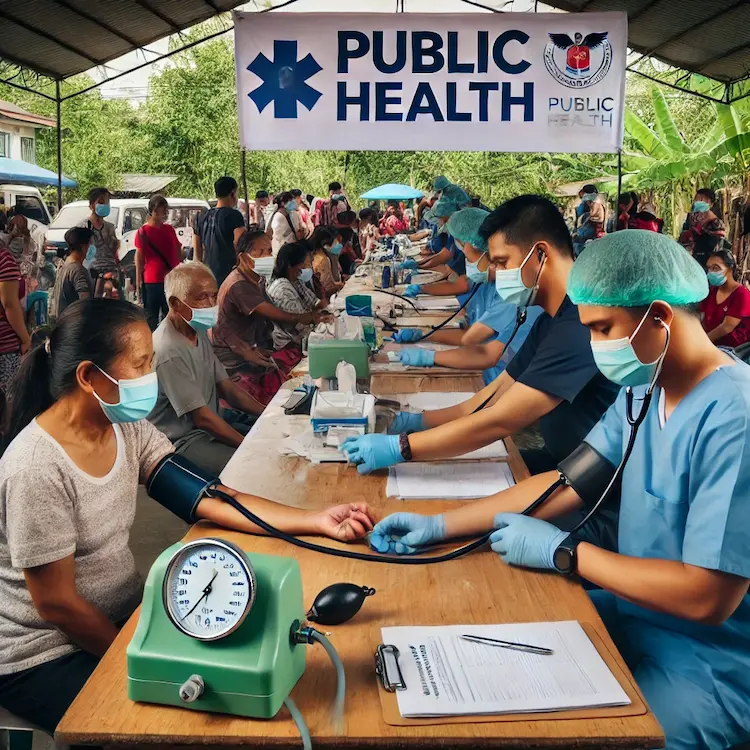Cardiovascular diseases (CVDs) are among the leading causes of death worldwide, including in the Philippines. High blood pressure (hypertension) is a major risk factor, often referred to as a “silent killer” due to its lack of obvious symptoms. One of the most effective ways to manage and prevent hypertension-related cardiovascular events is through regular blood pressure monitoring using sphygmomanometers (sphygs).
In this article, we explore how sphygs play a crucial role in preventing cardiovascular events, their impact on public health in the Philippines, and how individuals can effectively use them for better heart health.
Why Monitoring Blood Pressure Matters
High blood pressure increases the risk of heart attacks, strokes, and other cardiovascular events. Regular monitoring helps detect hypertension early, enabling timely intervention through lifestyle changes, medication, or medical consultation.
The Philippine Context
- Hypertension Prevalence: According to the Department of Health (DOH), approximately 37% of Filipino adults suffer from hypertension.
- Lack of Awareness: A study revealed that nearly half of hypertensive Filipinos are unaware of their condition.
- High Salt and Fast Food Consumption: The Philippine diet is often high in sodium, with excessive consumption of processed foods contributing to rising hypertension cases.
Types of Sphygmomanometers and Their Effectiveness
There are several types of sphygs available, each with advantages and limitations.
| Type |
Description |
Advantages |
Disadvantages |
| Mercury Sphygmomanometer |
Traditional manual device with a mercury column |
High accuracy, used in medical settings |
Bulky, requires training, environmental concerns |
| Aneroid Sphygmomanometer |
Manual device with a dial gauge |
Portable, mercury-free, widely used |
Requires calibration, prone to user error |
| Digital Sphygmomanometer |
Electronic device with automatic inflation |
Easy to use, suitable for home monitoring |
May have slight accuracy variations |
For Filipino households, digital sphygs are the most practical choice due to their ease of use, while mercury sphygs remain the gold standard in clinical settings.
Comparing Home vs. Clinical Blood Pressure Monitoring
Both home and clinical monitoring have benefits and limitations.
Home Monitoring
- Convenient and allows for frequent checks
- Helps track blood pressure trends over time
- May have user errors if instructions aren’t followed properly
- Some devices may give inaccurate readings if not calibrated
Clinical Monitoring
Conducted by professionals, ensuring accuracy
Helps diagnose hypertension properly
Can be expensive and time-consuming
White-coat syndrome may cause elevated readings in clinics
For Filipinos with limited access to healthcare, home monitoring can serve as a valuable tool to track blood pressure and prevent serious cardiovascular events.

How Sphygs Contribute to Preventing Cardiovascular Events
Sphygmomanometers help in early detection, management, and control of high blood pressure, reducing the risk of severe cardiovascular conditions. Here’s how:
-
Early Diagnosis of Hypertension
- Regular checks help detect elevated blood pressure before complications arise.
- The Philippine Society of Hypertension recommends routine monitoring, especially for adults over 40.
-
Guiding Medication and Lifestyle Changes
- Blood pressure readings help doctors adjust medications as needed.
- Patients can track improvements after lifestyle changes, such as reducing sodium intake.
-
Preventing Stroke and Heart Attacks
- Consistently high blood pressure increases stroke risk by four times.
- Monitoring can prompt individuals to seek medical intervention before reaching a critical state.
-
Encouraging Public Health Awareness
- Community programs and workplace health initiatives using sphygs promote early detection.
- Some Philippine barangays have hypertension screening days to encourage proactive health monitoring.
Practical Tips for Effective Blood Pressure Monitoring
To ensure accurate reading and effective use of sphygmomanometers, follow these best practices:
- Choose the right cuff size – Incorrect cuff sizes can cause inaccurate readings.
- Measure at the same time daily – Preferably in the morning before eating or drinking coffee.
- Rest before measurement – Sit still for at least 5 minutes before taking a reading.
- Avoid talking during measurement – Movement or talking can alter results.
- Keep a log – Tracking readings over time helps in understanding blood pressure trends.
Government and Health Initiatives in the Philippines
The Philippine government has launched several initiatives to combat hypertension and improve heart health:
- PhilPEN Program – A community-based screening initiative under the DOH for early detection of hypertension.
- DOH’s Healthy Heart Campaign – Educates Filipinos on the importance of regular blood pressure monitoring.
- Partnerships with Barangay Health Centers – Offering free blood pressure checks and health consultations.
These efforts aim to increase public awareness and make blood pressure monitoring accessible across various income groups.

Conclusion
Sphygmomanometers are essential tools in preventing cardiovascular events by enabling early detection and management of high blood pressure. In the Philippines, where hypertension rates are high, regular monitoring can save lives and reduce the burden on the healthcare system. By incorporating sphyg use into daily health practices and leveraging community-based health programs, Filipinos can take proactive steps toward better cardiovascular health.
Key Takeaways
- Hypertension is widespread in the Philippines, affecting over a third of the population.
- Regular blood pressure monitoring helps prevent heart attacks and strokes.
- Digital sphygmomanometers are the best option for home use.
- Combining home and clinical monitoring ensures accurate blood pressure management.
- Government programs are actively promoting hypertension screening and awareness.
Actionable Recommendations
- Invest in a high-quality digital sphygmomanometer for home monitoring.
- Encourage family members, especially seniors, to check their blood pressure regularly.
- Participate in barangay health checkups to ensure consistent monitoring.
- Maintain a low-sodium diet to help control hypertension naturally.

